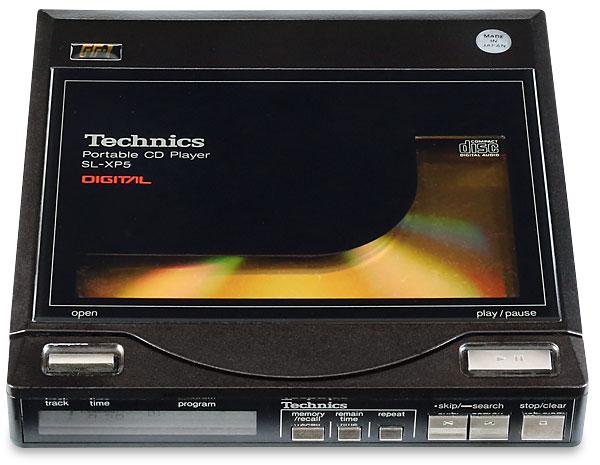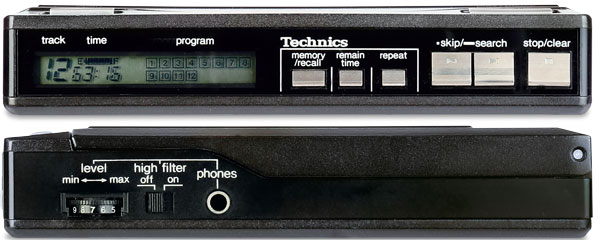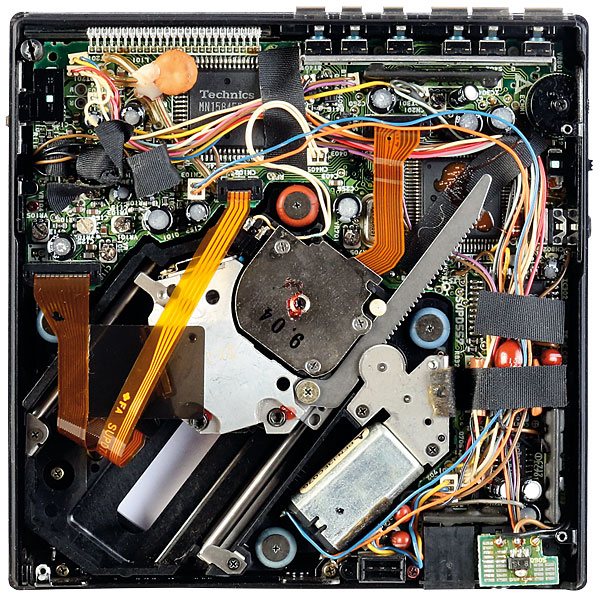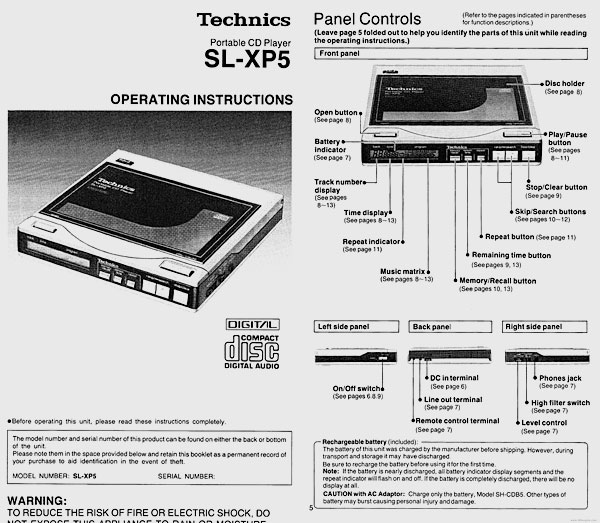Technics SL-XP5 Portable CD Player

 Believing portables to be as good as their full-sized rivals, many music lovers sought out the smallest – and this CD player was a compact king. How does it sound today?
Believing portables to be as good as their full-sized rivals, many music lovers sought out the smallest – and this CD player was a compact king. How does it sound today?
Think about portable CD players and the chances are that the Sony Discman [HFN Jul '19] will come to mind. The company's ability to produce enchanting and compelling miniature versions of existing products has been pretty much unequalled, and 'the world's smallest' is a phrase that can often be seen in Sony's vintage catalogues. In comparison, the company's larger models were frequently bland and derivative.
On the other hand, Matsushita's Technics division excelled at the bigger scale. Plus-sized designs such as the SP-10 turntable in its massive obsidian plinth, the SL-P1200 CD player [HFN Aug '13], SU-A2/SE-A1 pre/power amp combo and SB-7000 loudspeaker [HFN Jan '21] all drip with desirability – even if they are all far from easy to find a place for in the home.
Ray Of Light
Miniature Technics products are less common, partly because parent company Matsushita marketed most of them under the Panasonic brand. There were some exceptions, though, in particular a line of portable CD players that began in 1985 with the SL-XP7. It looks bulky now, but the SL-XP7 was the smallest CD player then available, being much more compact than Sony's D-50 [HFN Jan '13] and the Philips/Marantz CD10 [HFN Mar '21].

In a market that appreciated newness and novelty, it was perhaps odd that Technics chose to hardly change the appearance of the SL-XP7 when its replacement arrived in the latter part of 1987. Even when viewed side by side, the only obvious difference between the original model and the new SL-XP5, as reviewed here, was a slight reduction in the player's height.
Little was added or taken away when it came to facilities either, the only new feature being a battery-condition indicator that replaced the original 'low' warning. When fitted with case and batteries even the weight remained much the same at a little over a kilogram. This, then, was progress, although a lot of work had been done inside. The price had fallen too, from around £300 to just under £230.
The SL-XP5 may have been small, but it was packed with useful features and advanced technology. This started with the laser, which used the same 'FF-1' (Fine Focus, single beam) optics as the types found in the top full-sized models, such as the SL-P1200. Single-beam pick-ups were usually the preserve of Philips, the other big Japanese manufacturers preferring to use the simpler three-beam technique pioneered by Sony.
Limited space and the need for battery economy mandated the use of a single time-shared DAC in the SL-XP5, but the drawbacks of this were mitigated in part by a 2x oversampling digital filter. This simplified the design of the player's analogue stages and reduced the phase error between the channels at the highest frequencies from 90° to 45° – not ideal but an improvement. The DAC was the Burr-Brown PCM55, housed in a miniature surface-mount package. All contributed to the SL-XP5's audio performance, but it was another technical refinement, carried over from the SL-XP7, that enabled it to be so small.

Special Operations
Although invariably plastered with the word 'Digital', all early CD players contained a great deal of analogue circuitry, especially in the servo sections which position and focus the laser and govern the speed at which the disc rotates. To obtain the required precision, these circuits are usually built around operational amplifiers (op-amps) – small, accurate gain blocks that are able to perform many functions in analogue electronics.
To work at their best, op-amps require split symmetrical power supplies, one positive and one negative. Both the Sony D-50 and the Philips/Marantz CD10 obtained these from an internal DC-DC converter that turned the DC battery voltage into AC, passed it through a transformer and then returned it to DC of the correct level and polarity. These converters worked well, but they were bulky and required thorough screening to prevent radiated noise affecting the operation of the other parts of the player. What's more, these components added noticeably to the overall size of the unit.
Cell Division
Technics decided to dispense with DC-DC converters in its early designs and instead used a split dual-battery pack whose two banks of cells produced ±6V. This was at a time when specialised rechargeable packs were the norm for CD portables.
In its original form for the SL-XP7, the batteries were part of a case into which the player was mounted for portable use. Known as the SH-CDB7, this added considerably to the overall size of the player. For the SL-XP5 the design was improved and the battery simply clipped onto the base of the machine, increasing its depth from 25 to 39mm. When new, the battery would give a playing time of up to five hours, about the same as the time it took to charge it up again. Charging was performed with the pack in situ, using the supplied AC adapter (which could also run the player battery-free for home use). As this provided a dual symmetrical output it came with a specially designed three-pin connector.

Technics priced the SL-XP5 aggressively, undercutting the equivalent model from Sony. The full outfit included a basic wired remote control, a battery, a carry case and a strap (which sensibly attached to the battery and not the player, since it was not required for static use) but no headphones. This was probably a wise move as anyone buying at this level would have probably discarded them in favour of the default pair of Sennheiser HD40s, which everyone with nice personal players seemed to have at the time.
Unlike some of the earlier portables, the SL-XP5 still seems small today. Without the battery pack it is absolutely tiny, being only as deep as a CD in its case and notably less wide. There have been smaller portables made since, of course, but none has quite the incredible feeling of solidity of the
SL-XP5. It's almost as if it is cut from stone, so dense and solid is it in the hand. The standard of finish is immaculate too – they really don't make 'em like they used to.
Shock Rock
Of course, the keys and the display are very small too, but the play, stop, skip and open buttons are just large enough to be used without too much fuss. What does date the machine is the separate on/off switch at the side. This was necessary to prevent the battery from running down when the player was not being used, though in later models improved logic techniques allowed this function to be integrated with those for both play and stop.























































